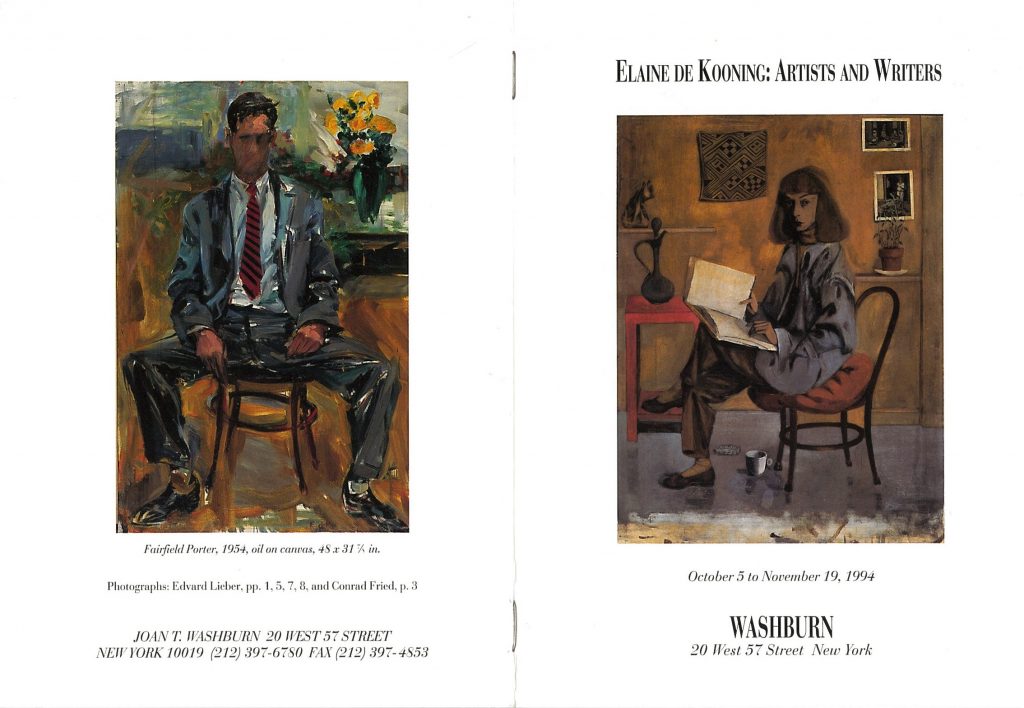On Friday, August 7th, the Smithsonian Libraries and the National Museum of American History hosted a tweetup in the recently renovated Innovation wing (First Floor, West) of the museum. Fifteen Twitter followers joined us for special curator-led tours of Patrick F. Taylor Foundation Object Project, Fantastic Worlds: Science and Fiction, 1780-1910 and the Dibner Library of the History of Science and Technology. The group of tweeters represented a fun mix of educators, book lovers, and history enthusiasts. Participants came from as far away as Kansas and Connecticut!
Smithsonian Libraries and Archives / Unbound

The National Portrait Gallery is currently exhibiting the work of Elaine de Kooning in the show Elaine de Kooning: Portraits, organized by Brandon Brame Fortune, the Portrait Gallery’s chief curator and senior curator of painting and sculpture. Elaine was an active member of the Abstract Expressionists in New York, a group known for a style defined by vivid colors, spontaneity and emotive strokes of thick, layered paint on monumental canvases. She married fellow Abstract Expressionist Willem de Kooning in 1943. However, Elaine’s work was not solely abstract, in fact, the majority of her work is representational in nature—a style that could be categorized as Figurative Expressionism.
Familiar with its waters, I was delighted when an early chart of the Chesapeake Bay, entitled Map of part of Virginia, Maryland, and Delaware of 1861, appeared in my cataloging queue. But then who doesn’t like looking at old maps? Getting absorbed in what is fanciful, long-gone or merely changed, and finding remnants of the well-known from a long association with the landscape. And reading any map on paper doesn’t happen every day now, let alone a very rare one.
Galileo Galilei, one of the most famous and important scientists of all time, a man whose ideas survived Roman Inquisition and house arrest, is going up against Jackson Pollock, Langston Hughes and others to determine who is the “Most Seriously Amazing” at the Smithsonian. In this second annual contest, units from around the Smithsonian have picked their most remarkable objects and are asking the public to vote for the best of the Smithsonian.
This post was written by Adrian Vaagenes, intern in the National Museum of American History Library.
One of the things that’s wonderful about a library is the chance it provides to get lost down a rabbit hole, to discover something or someone you never heard about before, and bring it back up to light. One such rabbit hole I discovered last week started while shelving books at the National Museum of American History Library. I ran across a title that caught my eye, Sinbad of the Coast Guard . Written in 1945, the book chronicles the real life adventures of a dog who became the mascot for the USS Campbell during World War II. Coincidentally, tomorrow August 4th, marks the 225th anniversary of the creation of the “Revenue Marine”, a maritime service to enforce customs laws which would later become the Coast Guard.
As a book conservator for the Smithsonian Libraries I’ve been given ample opportunity to expand my knowledge through workshops, seminars and professional meetings. One of the most interesting opportunities I’ve recently had was to attend a week long workshop, “Understanding Leather: From Tannery to Collection,” in Northampton, England. The workshop was held at the Leather Conservation Centre, an international center for leather conservation and research, on the campus of the University of Northampton. The course was a mixture of theory and practice with sessions held in a classroom and in the University’s tannery. The goal of the course was to understand the process of leather production to better understand why and how leather deteriorates and therefore better care for it from a preservation angle.
Almost a year ago, the Libraries celebrated “Museum Cat Day”, a social media celebration of cat-related objects in museums which was organized by Culture Themes. To see the Libraries’ contributions to Museum Cat Day, check out our Storify account of the action. On the anniversary of such a fun social media event, we take a look at more cats in art! This post was contributed by Ria Witteman, intern at the American Art Museum/National Portrait Gallery (AA/PG) Library summer 2015. Ria is a rising third year at the University of Virginia, majoring in Art History and Spanish.



